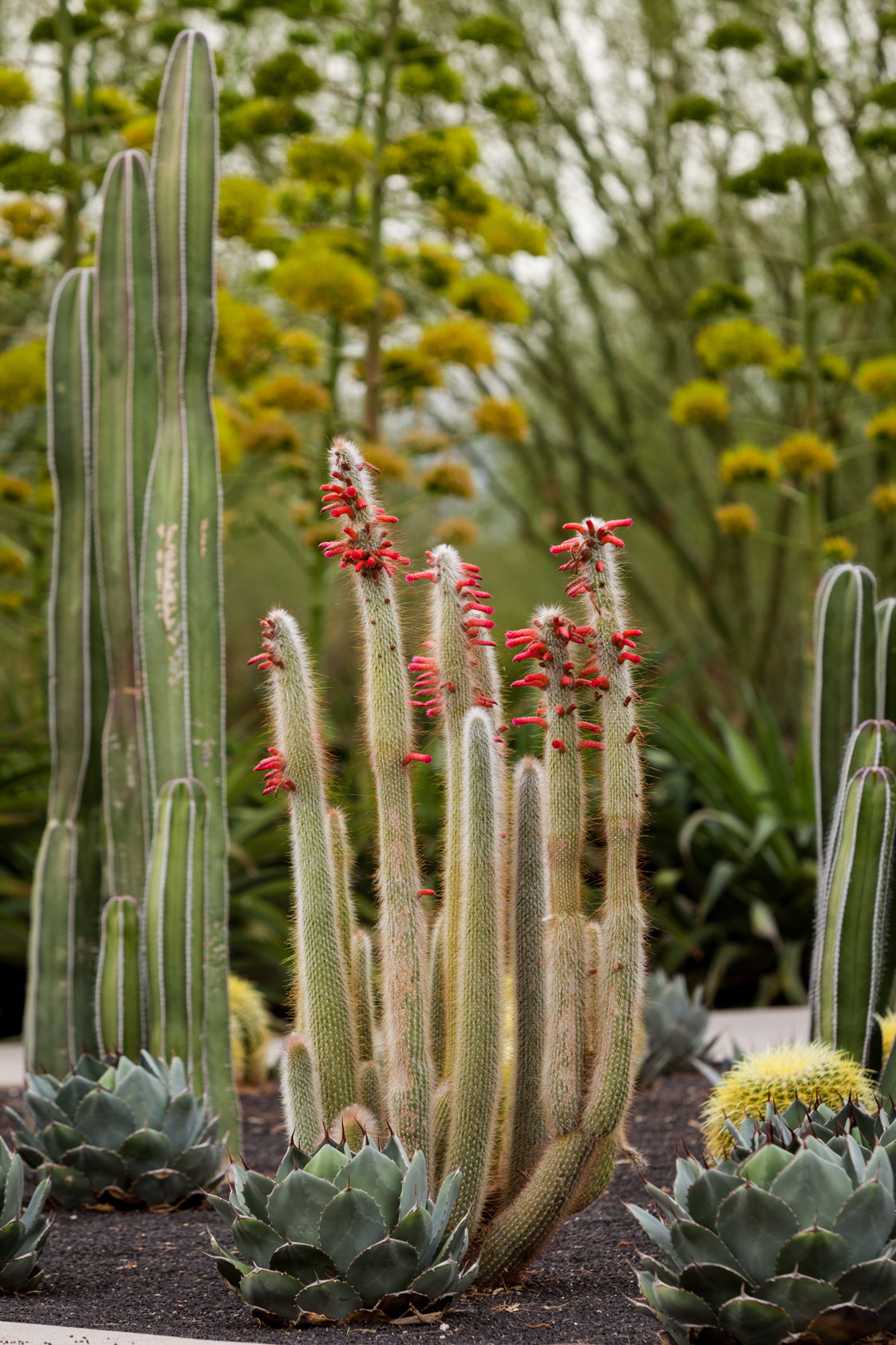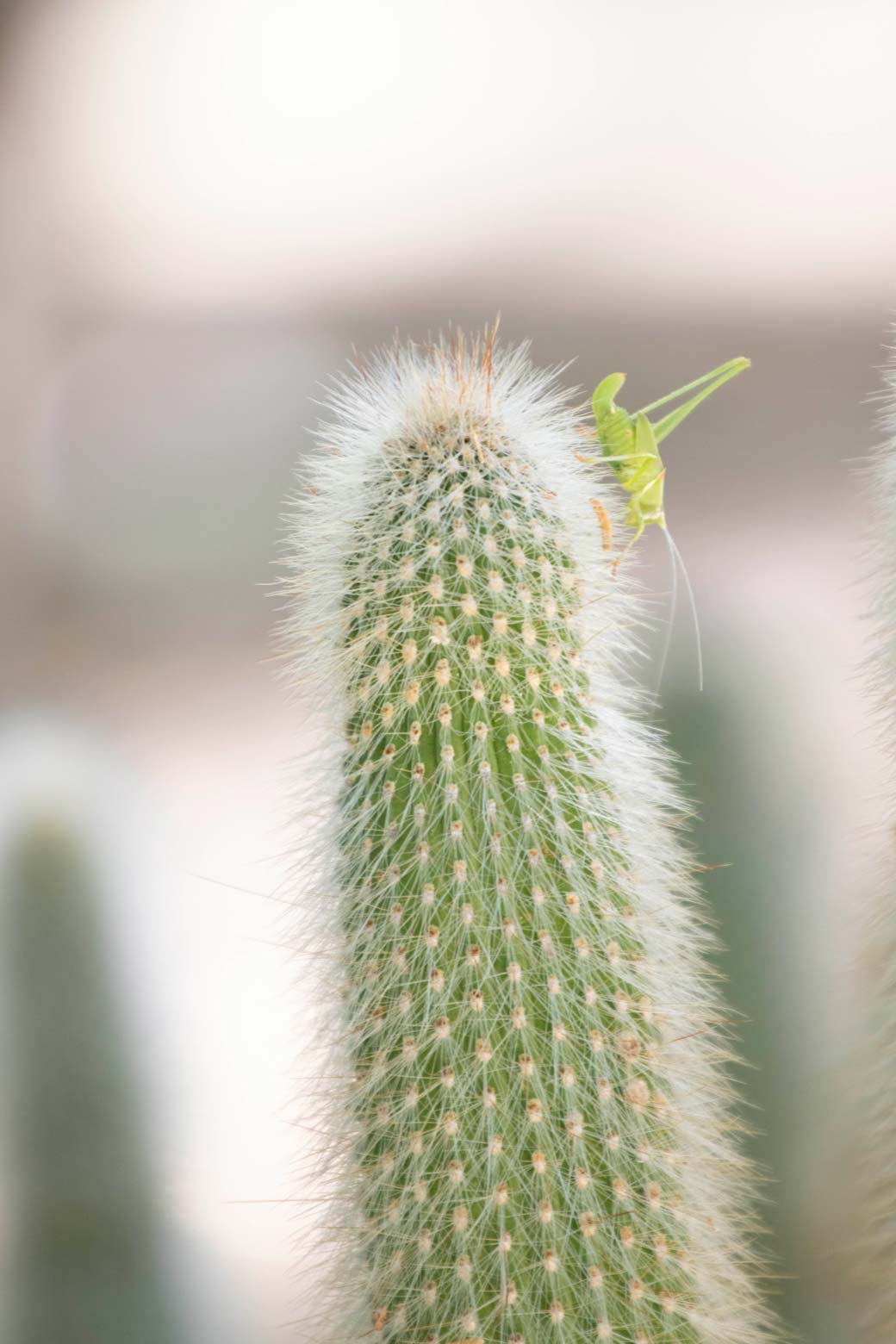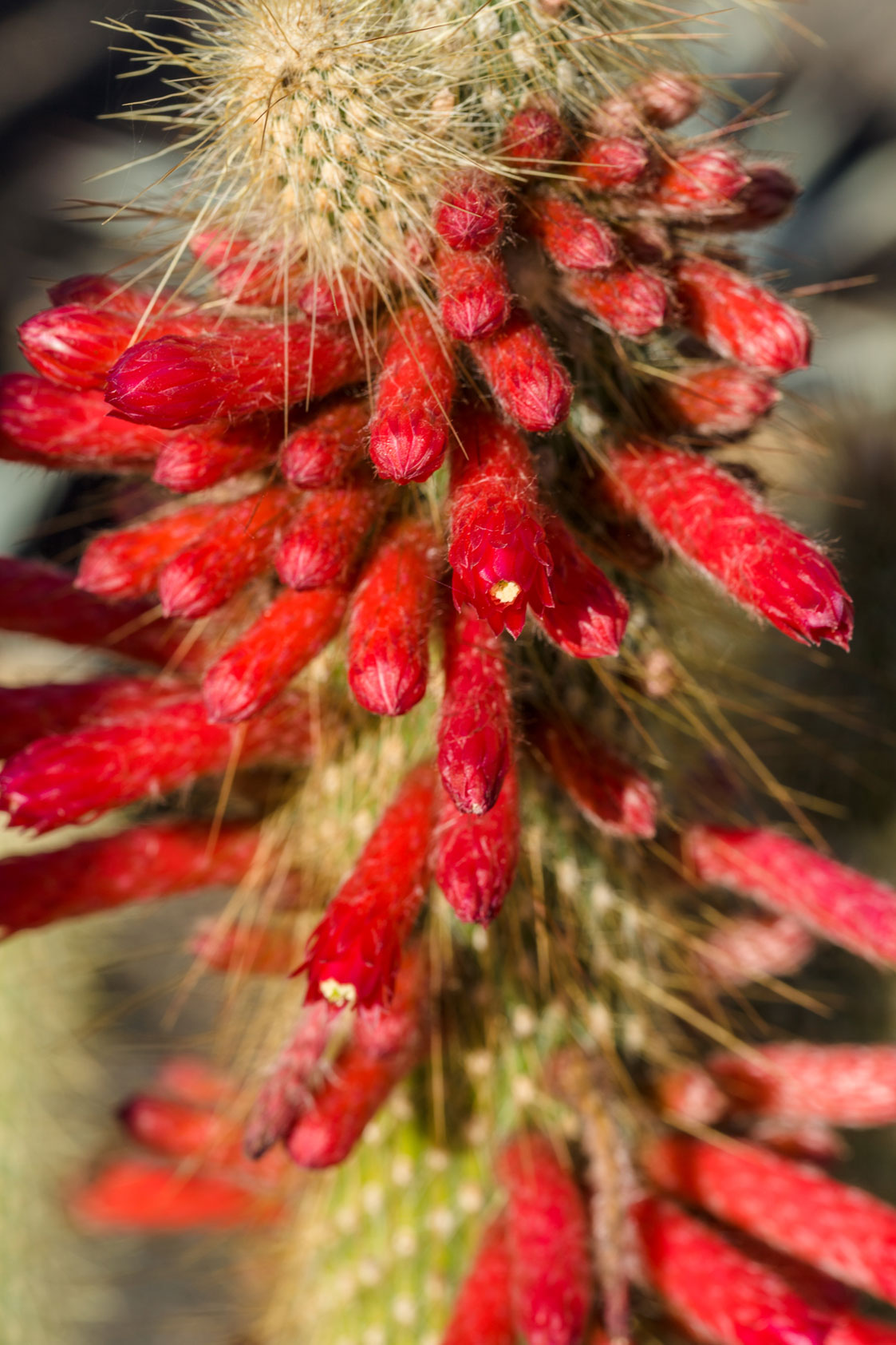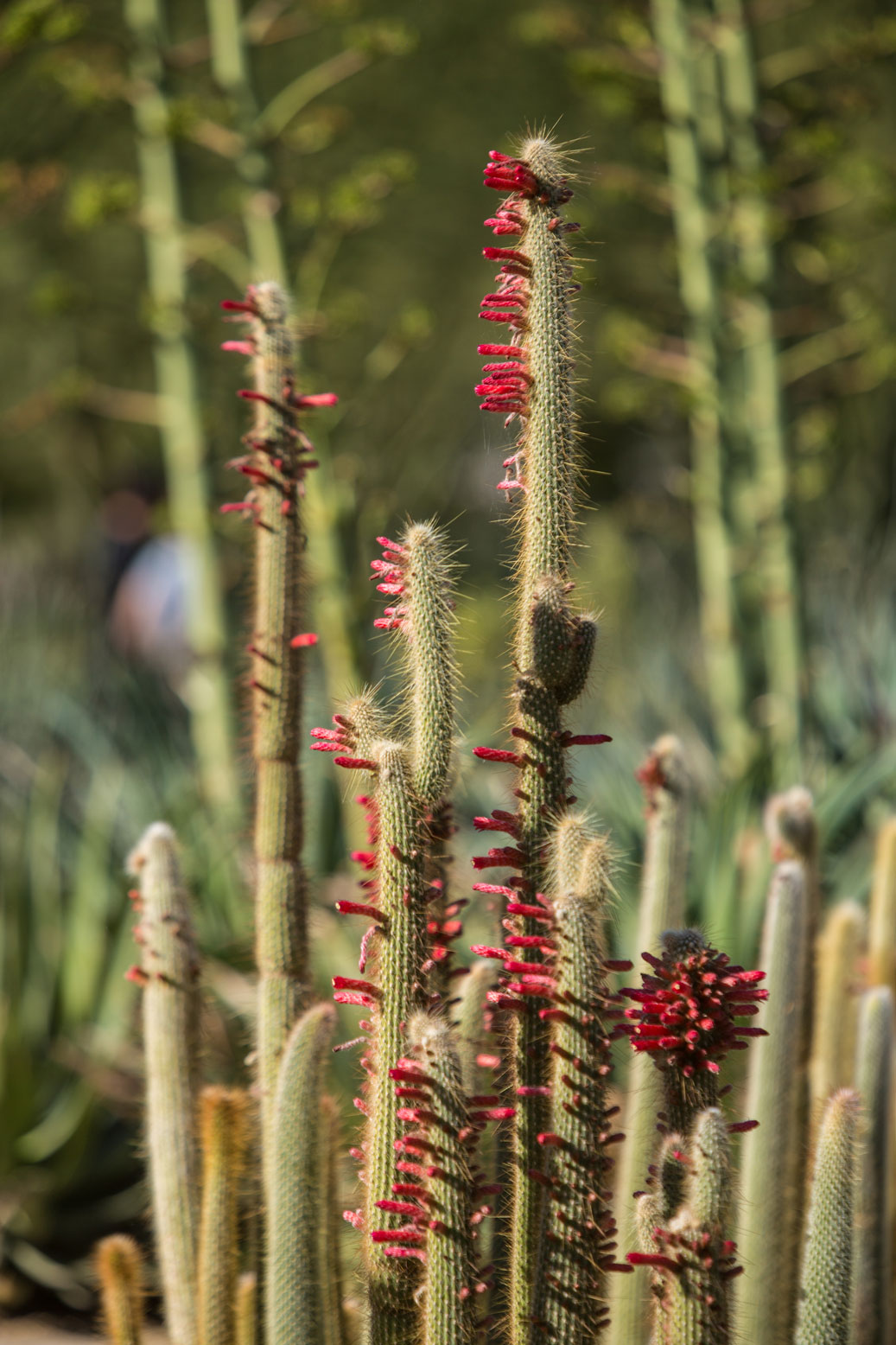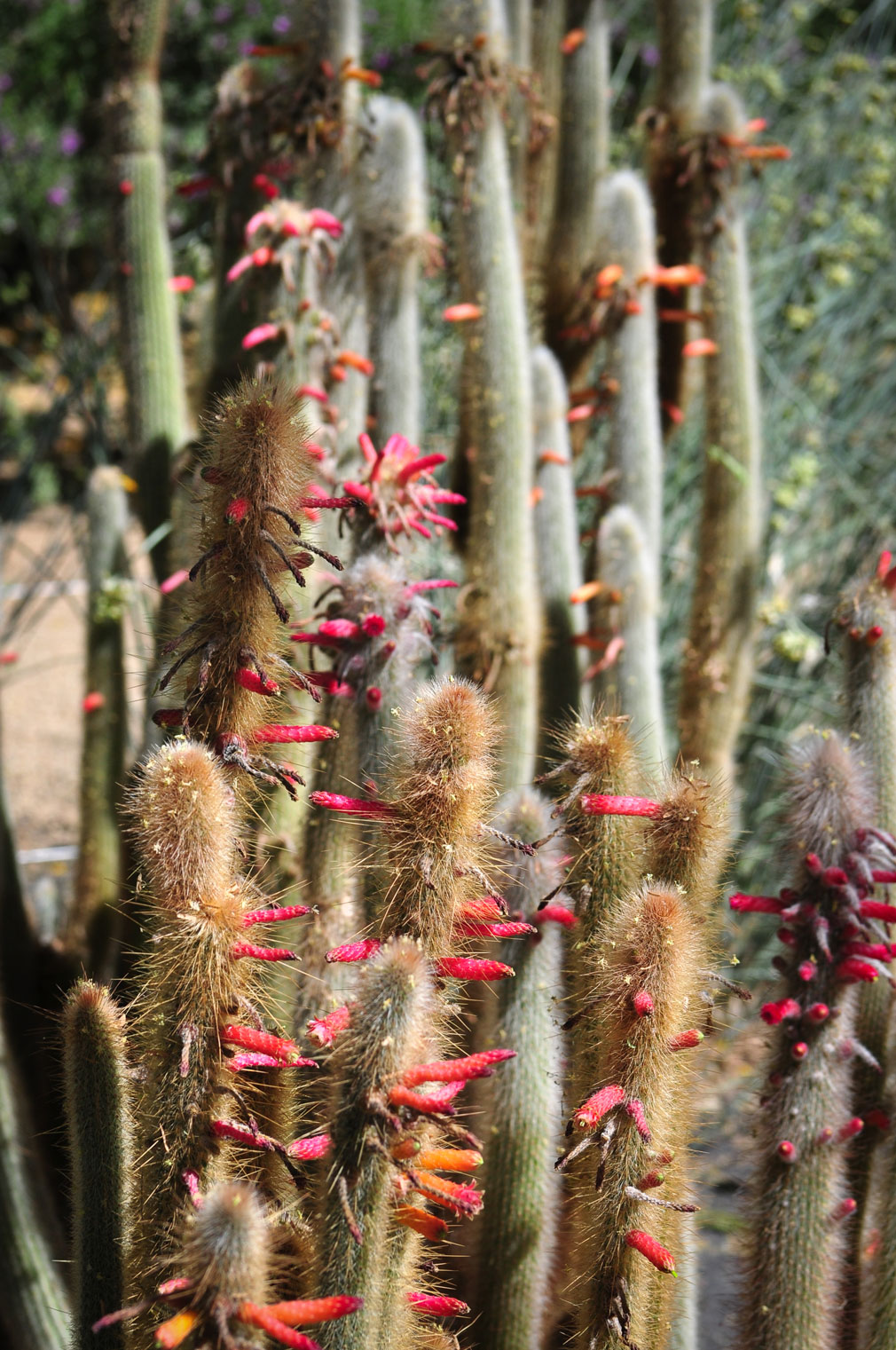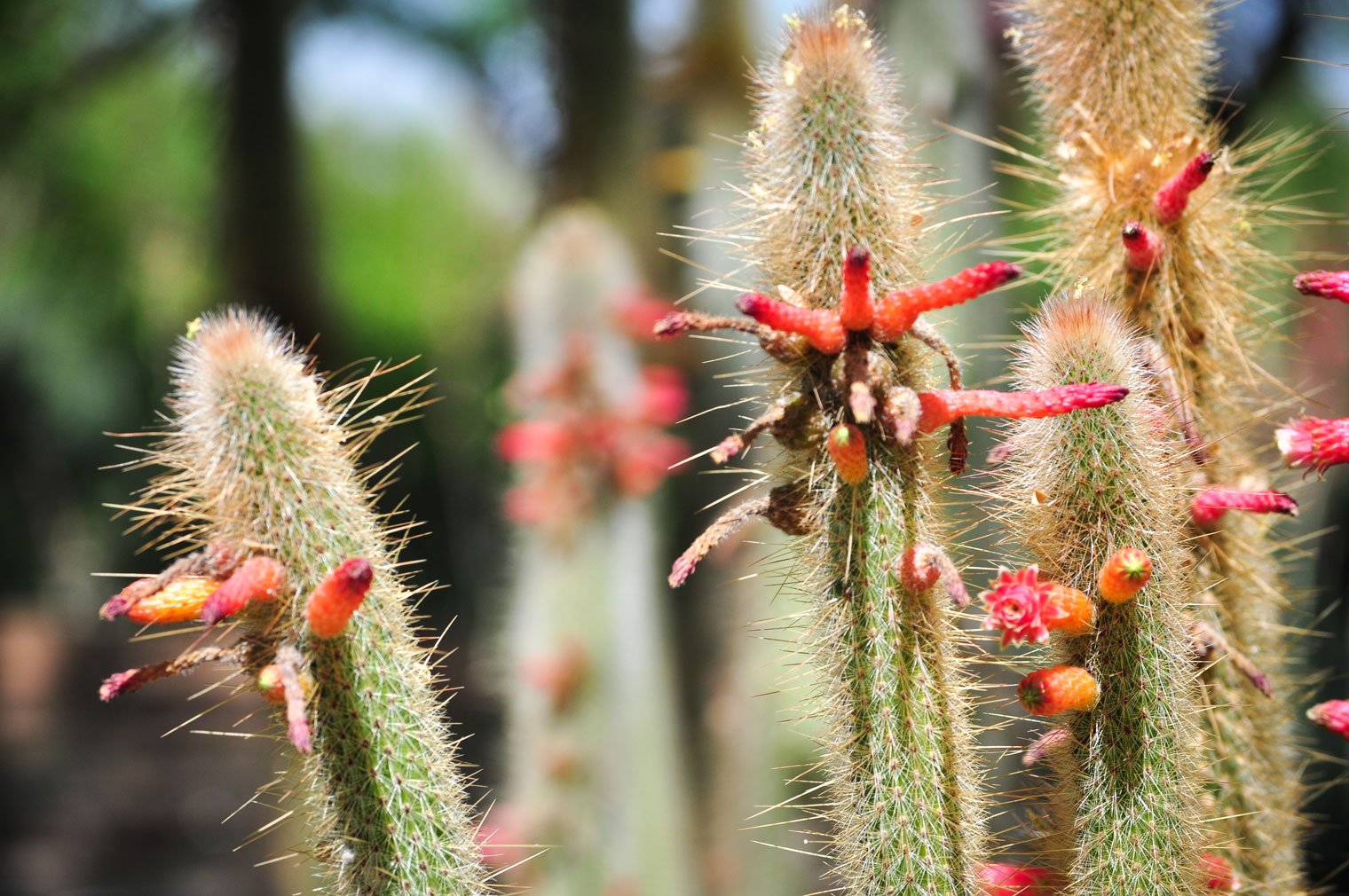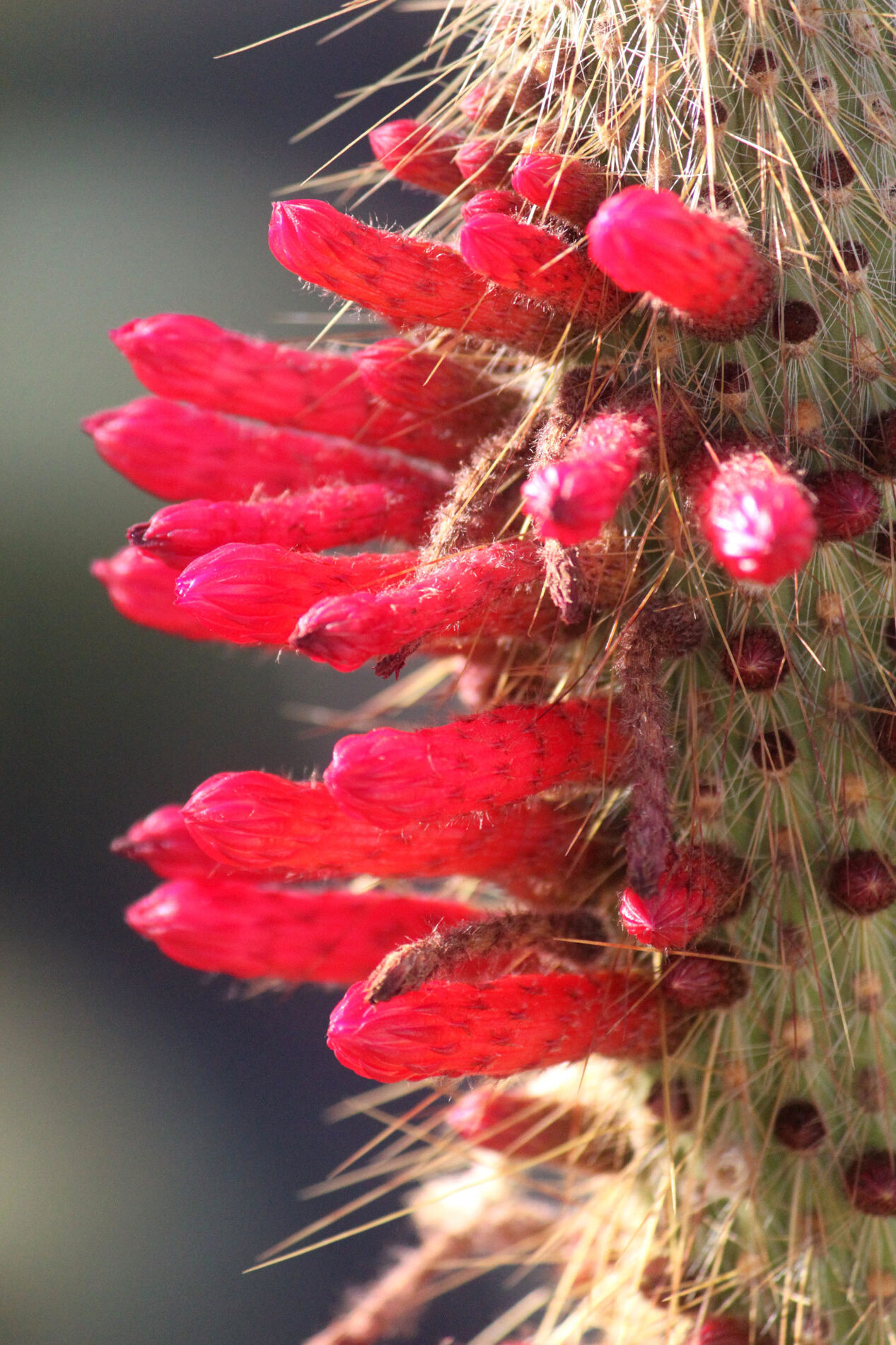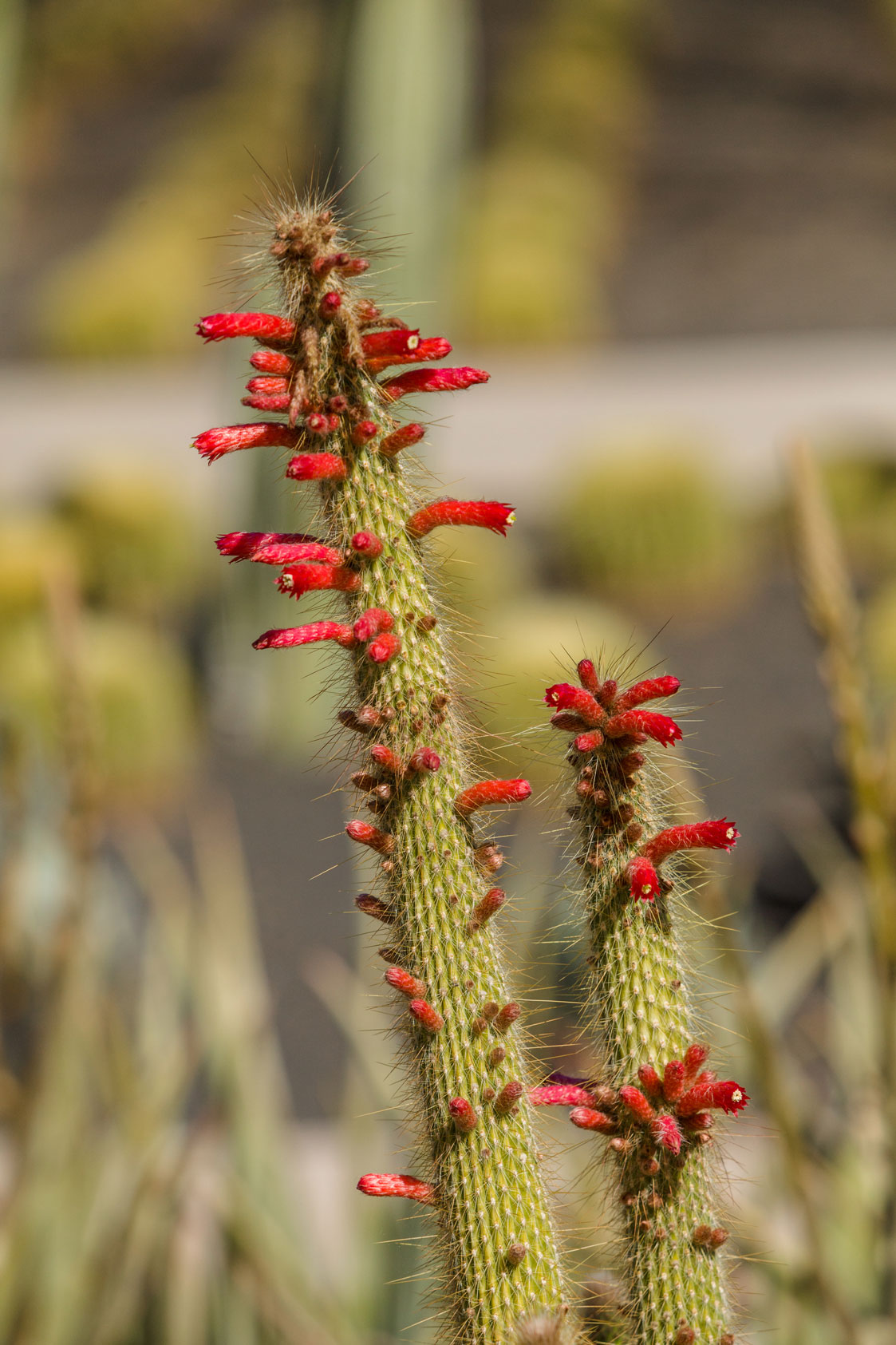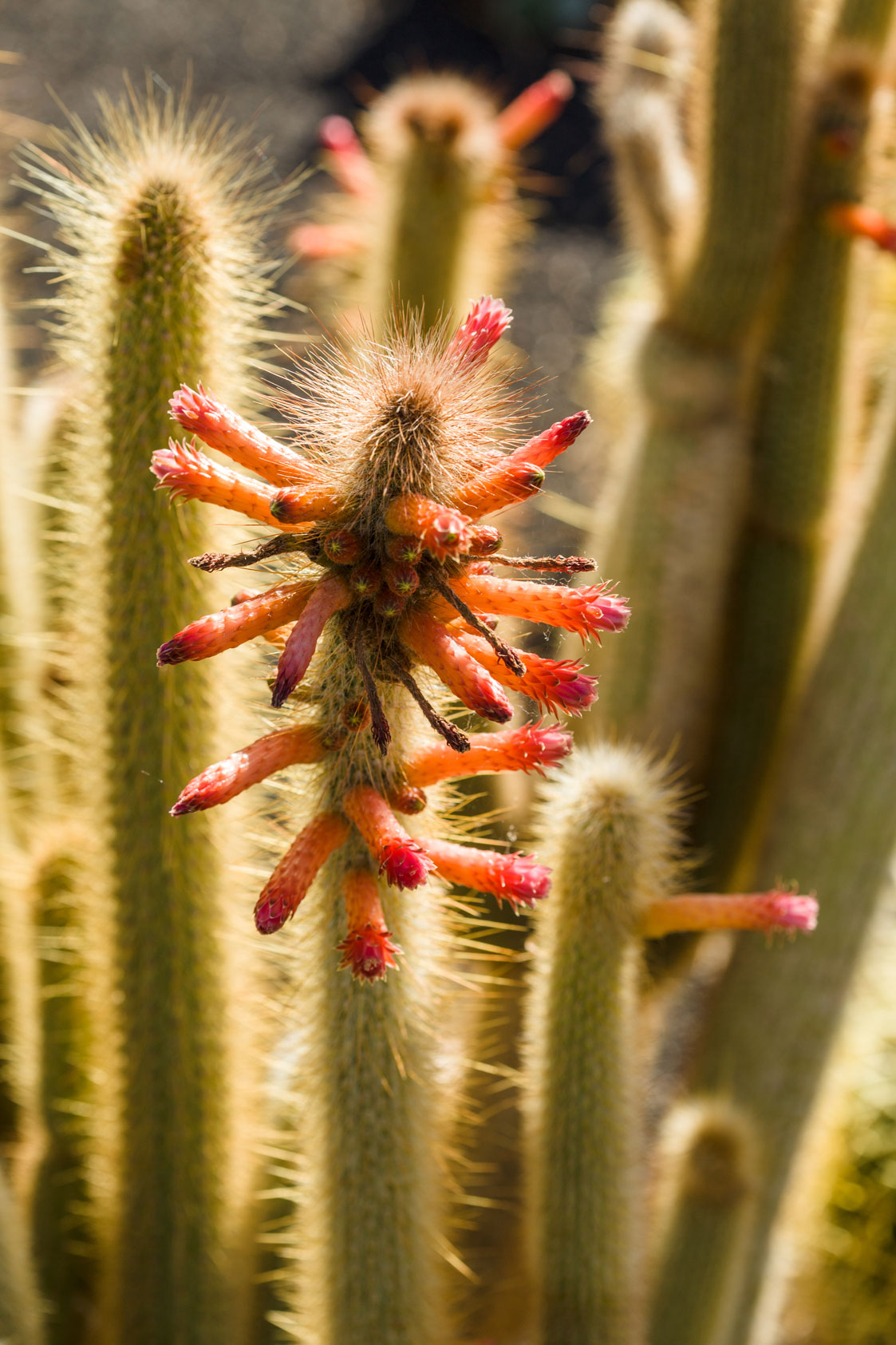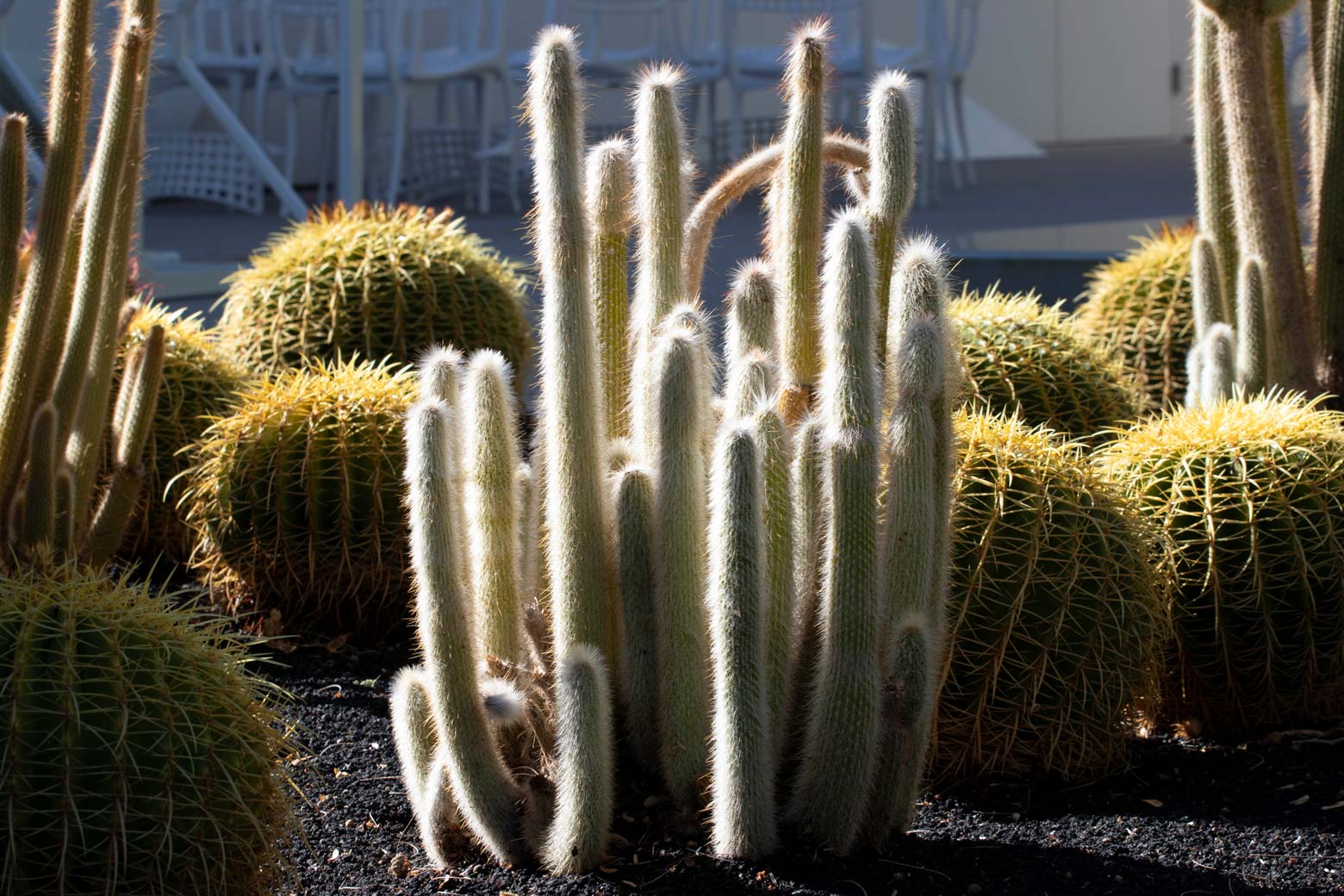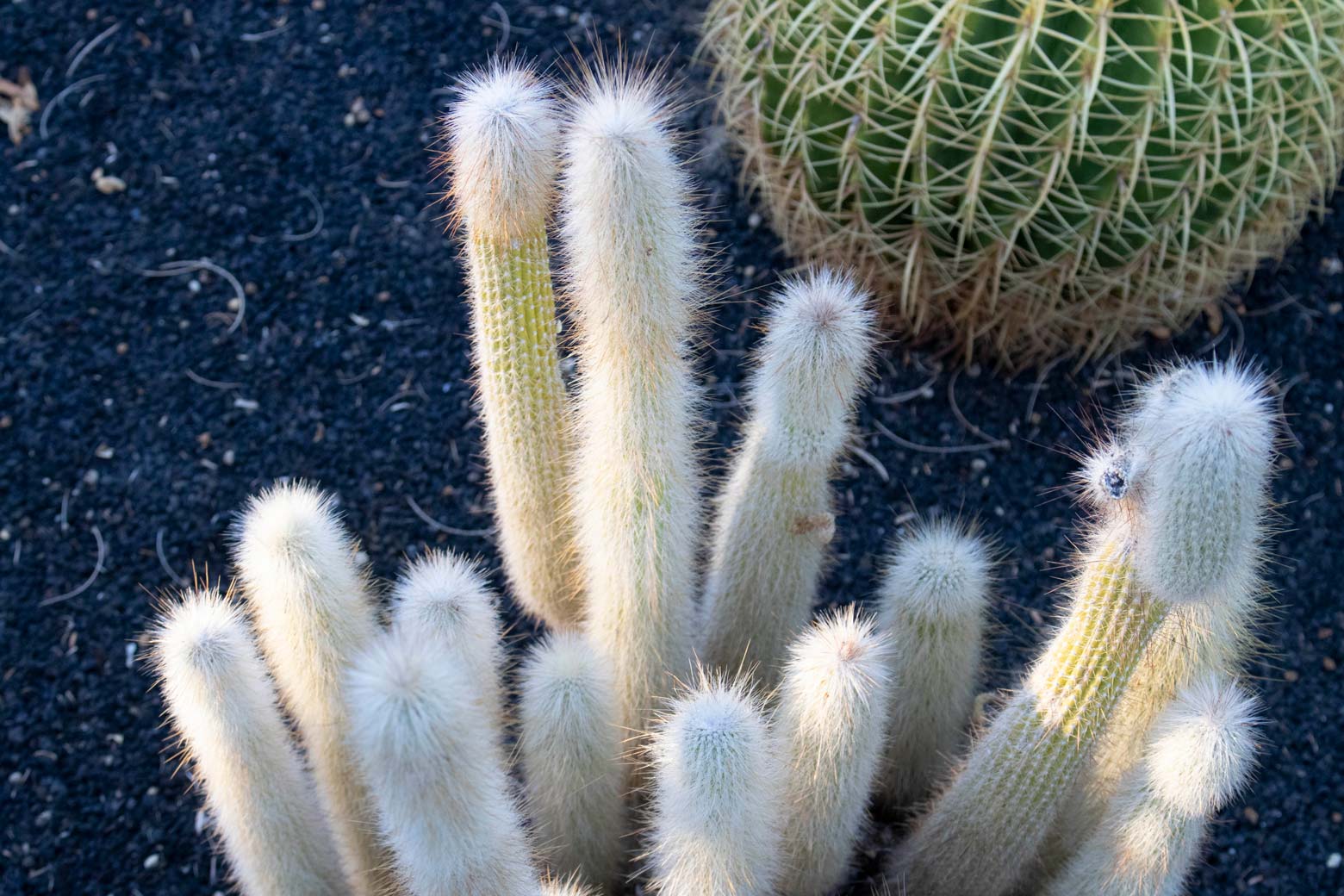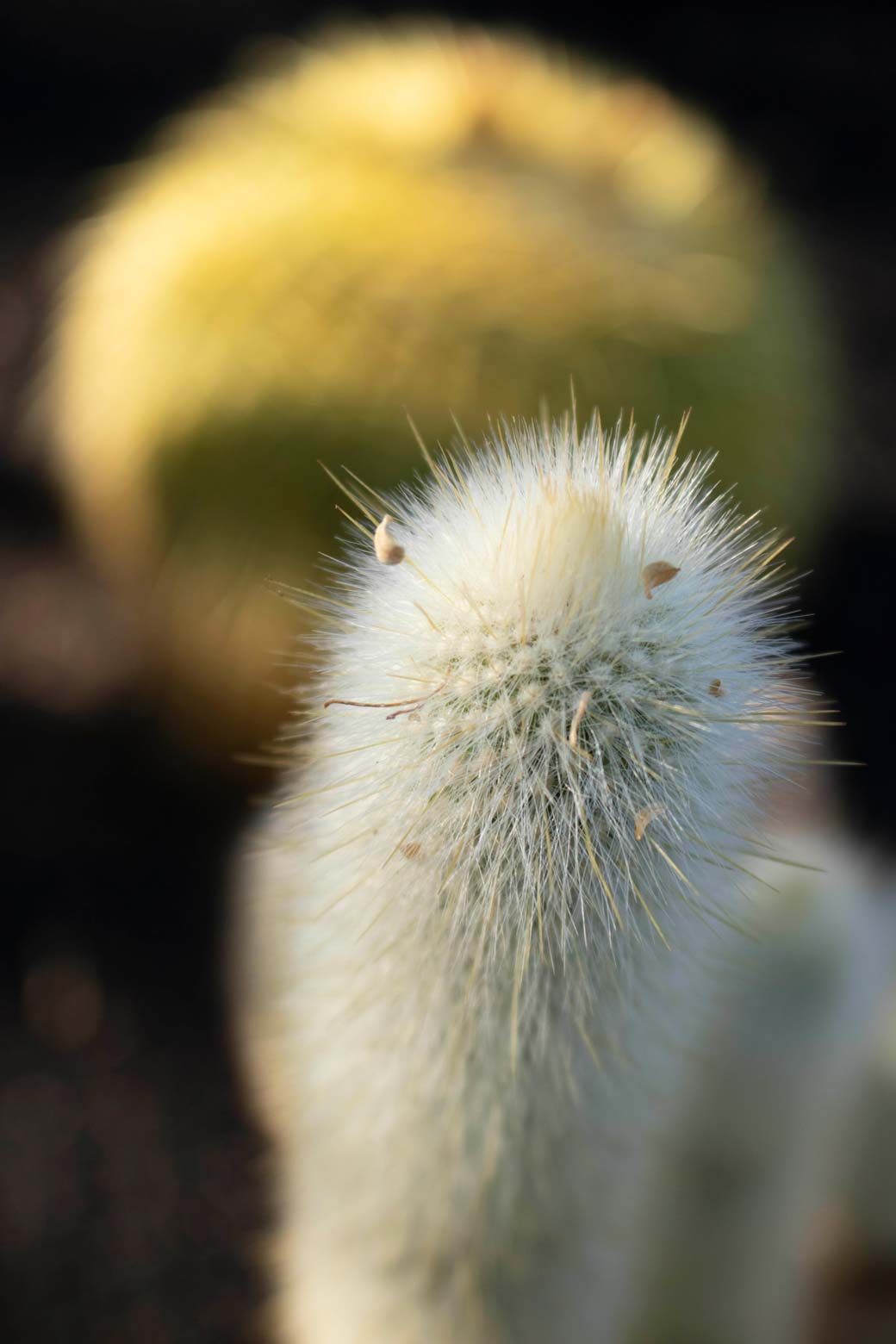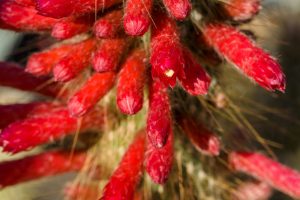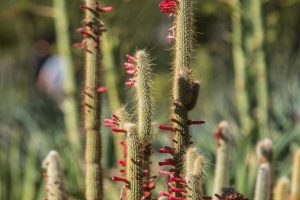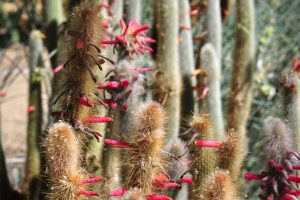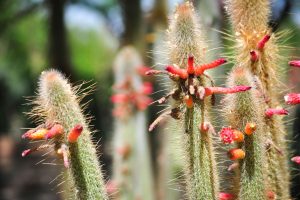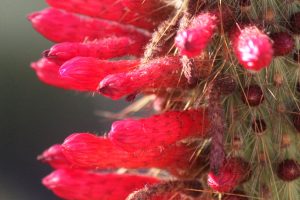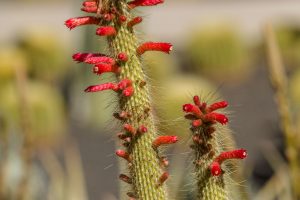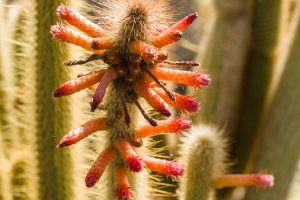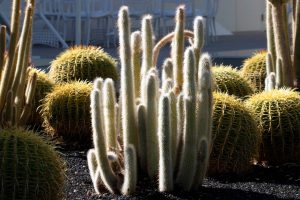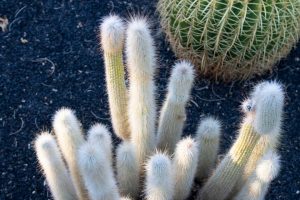The specimen beds near the café have several Silver Torch cacti. The original planting included the species strausii, but clearly there are some other varieties from within the genus, and possible hybrids displaying a range of bloom color and spine distribution.
Silver Torch displays an abundance of spines on thin, cylindrical stems. It grows to about 10 feet. In the botanical genetics field, there is still some disagreement as to what should be included in the Cleistocactus genus, so as cactus are sorted more specifically along genetic lines rather than botanist observations, we will see new groupings in the future.
Red blooms can occur on Silver Torch Cactus throughout the year. At Sunnylands, the blooms emerge between red and orange, but generally the plant can flower with yellow and green blooms, too. The flowers barely open, and it is from this they get the name of the genus, Cleistocactus, as Kleisto in Greek means, “closed.” This tightly wrapped bloom may show some diversity, growing both straight and curved on different species. The blooms have a beak shape that closely accommodates the beaks of the hummingbirds that pollinate them. Birds with larger beaks would have difficulty. Flower design clearly shows preference when it comes to pollinators. In this case, it’s the hummingbirds that are preferred.
The genus of Cleistocactus extends throughout Argentina, Peru, and Bolivia.
